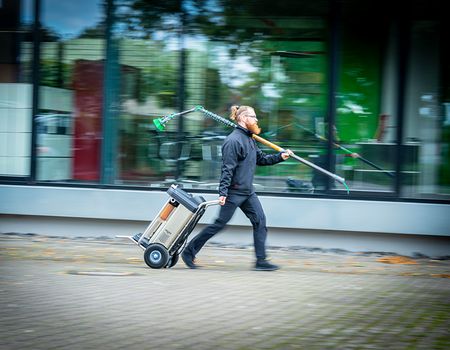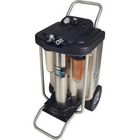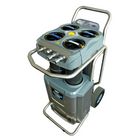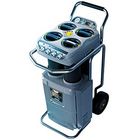Advantages of pure water
Cleaning with pure water is a highly effective cleaning method: with the help of mechanical filtering, water is transformed into its purest form. In this process, minerals are removed from the water as if by an invisible magnet.
When cleaning with pure water, you can cut out annoying, time-consuming work steps such as wiping and polishing.
Incidentally, water is only considered 100 percent pure when the TDS (total dissolved solids) value is 0 ppm. When it comes to the thorough filtering of water, various methods have proven to be particularly effective. In this post we want to go into more detail about the reverse osmosis filter method.
How does reverse osmosis work?
Reverse osmosis is a process in which water is forced through a semi-permeable membrane. In reverse osmosis, water with a high mineral content is forced through a semi-permeable membrane. The membrane traps most of the minerals, and the water which comes out the other side is pure water. This method removes an average of 85-95 percent of the water’s impurities.
Reverse osmosis with the RO filter
Filtering with a reverse osmosis filter provides a constant flow of water in high-demand situations while requiring minimal maintenance.
The entire filtering process can be completed with an RO system water filter. The RO filter demineralises the water in three successive steps. First, the water passes through a pre-filter, which removes carbon and sediments. The main function of the pre-filters is to protect the membrane by removing contaminants. Membranes can be a little delicate, so the RO filter intercepts the larger particles to stop them from causing damage. Then, the water is pumped through up to two high performance RO membranes which filter out up to 98 percent of dissolved minerals and contaminants. The RO membrane itself is the third stage. It is responsible for most of the cleaning, and is the system’s most important component. An activated carbon filter then removes other chemicals that could contaminate the membrane, such as chlorine. This maximises the membrane’s lifespan. At this point, the water flow is divided into waste water (concentrate) and pure water.
Many people don’t realise that this filtering method also requires a deionisation (DI) filter, which removes the last 5-15 percent of impurities, in order to completely purify the water and produce pure water for window cleaning. UNGER provides an ROI calculator on its website. Simply enter a few details to receive a professional, automated filter recommendation. In addition, the calculator works out how much the filter could save you, and shows an overview of the costs you could reduce.
What’s the best way to use the RO filter?
The use of a reverse osmosis filter, such as the HydroPower RO system water filter from UNGER, is ideal for cleaning large glass facades and for regular use. Offering a pure water output of up to 400 litres per hour, the system can be used by up to three applications at the same time. Filters of this type are useful in areas with hard or very hard water. Advantage: all the components of the water filter can be exchanged quickly and easily. Cleaning with pure water is even safer when combined with the professional UNGER nLITE system and water-fed pole. The system enables you to reach high windows on upper floors with both feet firmly on the ground, thus avoiding the need for ladders or lifting platforms and the associated rental costs.




